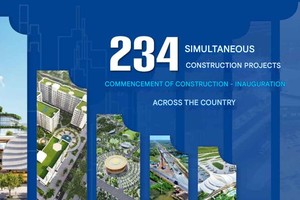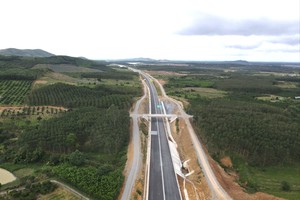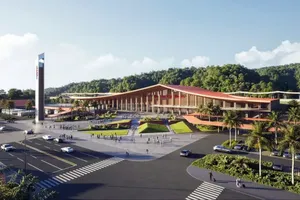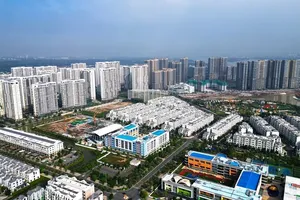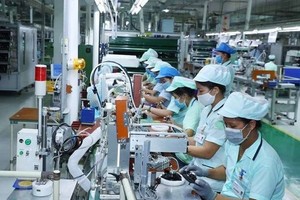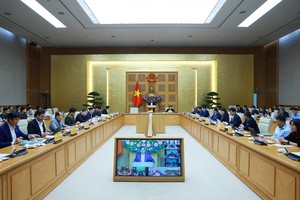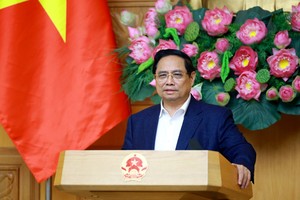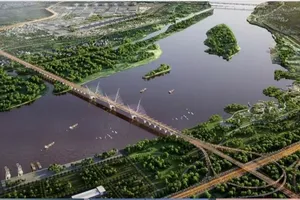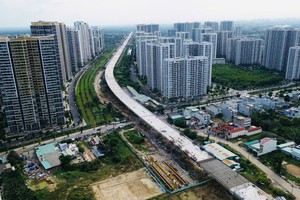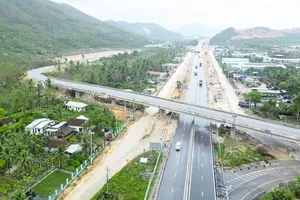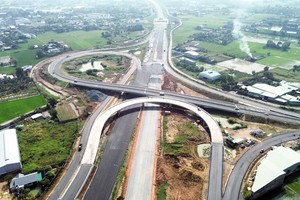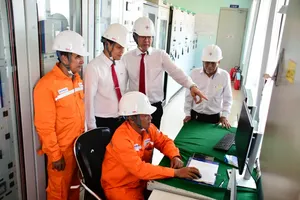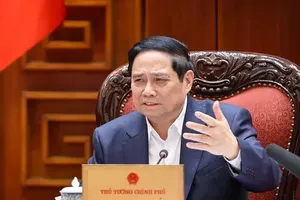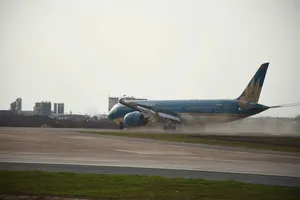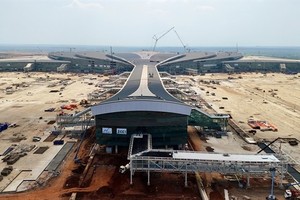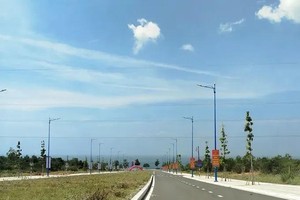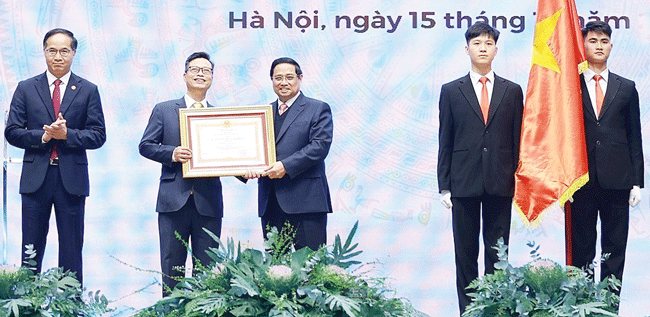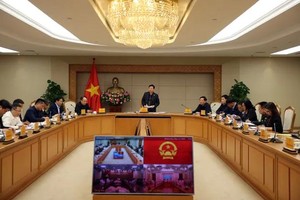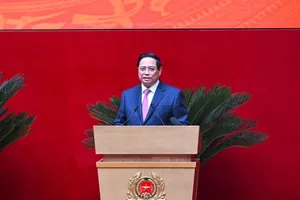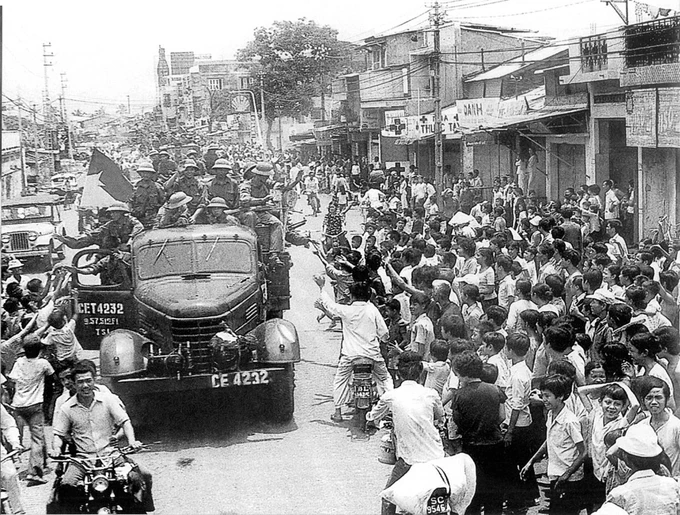
Historical moment unfolds
In the morning of April 30, 1975, Nguyen Huu Thai, the then youthful Chairman of the Saigon General Student Union, accompanied by journalism professor Huynh Van Tong, journeyed towards the Independence Palace in journalist Nguyen Van Hong’s vehicle. Reaching the side entrance of Nguyen Du Street, they resolved to proceed directly to the palace steps.
An unnerving silence prevailed the whole Palace. Thai urgently sought Ly Quy Chung, the newly appointed Minister of Information, intending to coordinate their presence at the city’s radio station. However, an intense anxiety gripped the city, leaving no driver willing to take the wheel for fear of being shot. As the group hesitated, an unforeseen spectacle unfolded before them: the thunderous advance of Liberation Army tanks towards the Independence Palace.
“The guttural roar of tank engines echoed through the city’s heart, becoming a truly majestic, if jarring, soundscape. In a heartbeat, the gates of the Independence Palace buckled and swung wide open. The tanks surged forward, their presence a definitive punctuation mark on the Saigon regime’s collapse," Architect Nguyen Huu Thai reminisced.
The atmosphere within the palace crackled with tension. Precisely then, soldier Bui Quang Than leaped from a tank, clutching the flag of the National Liberation Front of South Vietnam. Noticing the soldier’s momentary awe at the palace’s grandeur, Thai stepped forward, offering guidance. “Lowering the tri-color flag proved a struggle; it was stubbornly secured. But after a concerted effort, the Liberation flag finally unfurled atop the Independence Palace”, he recounted. In that very instant, a new chapter in Vietnam’s saga permanently commenced.
Around midday, Architect Nguyen Huu Thai and Liberation Army cadres escorted President Duong Van Minh and his cabinet to the radio station. There, he was unexpectedly thrust into the role of an impromptu announcer, tasked with proclaiming Saigon’s liberation and introducing Duong Van Minh’s unconditional surrender.
Following the broadcast of the surrender tape, which unequivocally declared the Saigon government’s dissolution and the transfer of authority to the Provisional Revolutionary Government, Political Commissar Bui Van Tung of the 203rd Tank Brigade solemnly announced Saigon’s complete liberation.
Immediately thereafter, Nguyen Huu Thai’s group orchestrated a radio broadcast disseminating new policies. Thai reflected that the whirlwind of activity at the time obscured the profound significance of his role, a realization that dawned on him later – that he was not merely a witness but an active participant in a pivotal historical event, a truth he has cherished throughout his life.
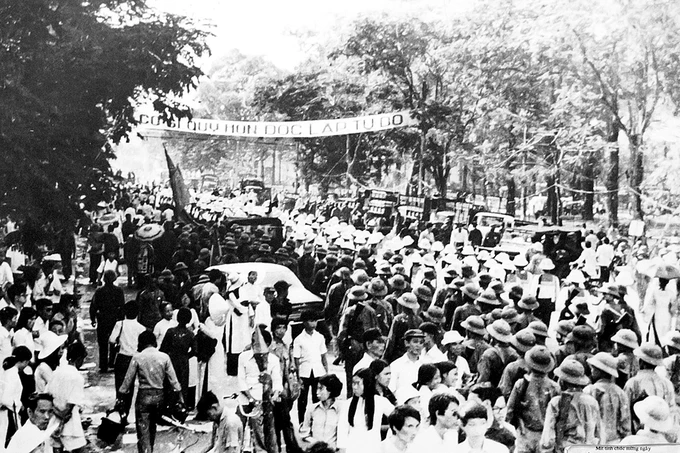
Festival of peace dawns
By the afternoon of April 30, 1975, the city was slowly regaining its normal routine. “That night, an unusual stillness descended upon Saigon’s skies. It was the inaugural night of peace”, Thai recounted with profound emotion.
A deeply ingrained image from that day remains etched in his mind, with soldiers kindling fires and preparing meals in the parkland before the Independence Palace. Saigon’s youth, shedding any apprehension, eagerly engaged with the soldiers, their interactions akin to a long-awaited reunion with kin. “The atmosphere was utterly unexpected, devoid of the tension one would associate with the immediate aftermath of war. It felt more like a day of profound reunion”, Thai observed.
The days following April 30, 1975 saw a definite wave of excitement sweep across the city. Students diligently directed traffic, collected refuse, and encouraged Saigon soldiers to relinquish their arms. In the morning of May 1, 1975, thousands of young people congregated at the Student Center (on Pham Ngoc Thach Street now).
“For the first time in years, they could gather without the specter of oppression or arrest. I witnessed radiant faces, genuine smiles – a simple, heartfelt joy in their newfound freedom to speak and to embark on a shared future”, Thai recalled, his voice tinged with emotion.
April 30, 1975 has become enshrined as one of the most momentous events in Vietnam’s history. It was not merely the cessation of war but a true festival of peace, a day marking the nation’s entry into a new era. “The Liberation Army entered Saigon not as conquerors, but as returning brothers. In the eyes of the people from both North and South, it was a grand festival – a celebration of peace, unity, and reunion”, Thai joyfully affirmed.
Fifty years have elapsed, during which Thai spent a significant period living and working abroad before returning to Vietnam to teach at a university. Yet, each recollection of that day reignites a spark of profound pride in his eyes.
For it was our fatherland…
Colonel – Artist Phan Oanh, former Director of the Museum of the Armed Forces of the Southeast, recounted arriving in Saigon at 12:30 p.m. on April 30, 1975, an hour after the 2nd Corps and the Tank Brigade had raised the flag at the Independence Palace. His unit was tasked with military administration duties. At midnight, stationed at the address of 10 Alexandre de Rhodes Street, adjacent to the Ministry of Foreign Affairs, he received orders to report to his superiors.
His mission involved creating celebratory slogans and artwork promoting national reunification, as well as assisting with displays for the liberation army. Van Nghe Giai Phong Newspaper and Sai Gon Giai Phong Newspaper prepared their inaugural issues celebrating national unity and the stage for the victory parade, welcoming President Ton Duc Thang and other Party and State leaders.
“It struck me then that this was the Fatherland. Regardless of political affiliation, everyone shared the fundamental desire for an end to the war and the reunification of our nation,” said Artist Phan Oanh emotionally.
Navigating two epochal wars
On the historic day of April 30, 1975, Colonel Nguyen Van Tau (aka Tu Cang), a Hero of the People’s Armed Forces and a veteran of two national defense wars, carried the full weight of his service. For Tu Cang, the memory of April 30, 1975 was the joyous reunion in his small home, in a nation finally at peace, independent, unified, and with its territorial integrity restored.
He recalled, “I will forever remember those special two nights, one in 1946, bidding farewell to my wife to embark on the fight, and the night of April 30, 1975, returning in total victory, meeting again in our small Thi Nghe home. Twenty-nine years separated those nights, filled with vastly different emotions of sorrow and joy, yet both were marked by tears.”
Even as the Liberation Front flag waved over the Independence Palace, Tu Cang remained at his post until noon. His revolutionary duty complete, his family reunion coincided with the joyous news of becoming a grandfather. That evening, his familiar call brought his wife rushing out, tears of joy streaming down her face. His reunion with his wife after nearly three decades apart was a poignant mix of delight and sorrow. Holding his newborn granddaughter, the weight of years and the triumph of peace overwhelmed him with tears.
Whether fifty years or more have passed, time will inevitably prevent people from meeting all the historical witnesses. Yet, their heroism endures, inspiring successive generations so that when future generations turn the pages of Vietnamese history, they will cherish, be proud of, and be grateful for this peace, independence, and territorial integrity, understanding that national reunification was not a given, but a hard-won reality.
